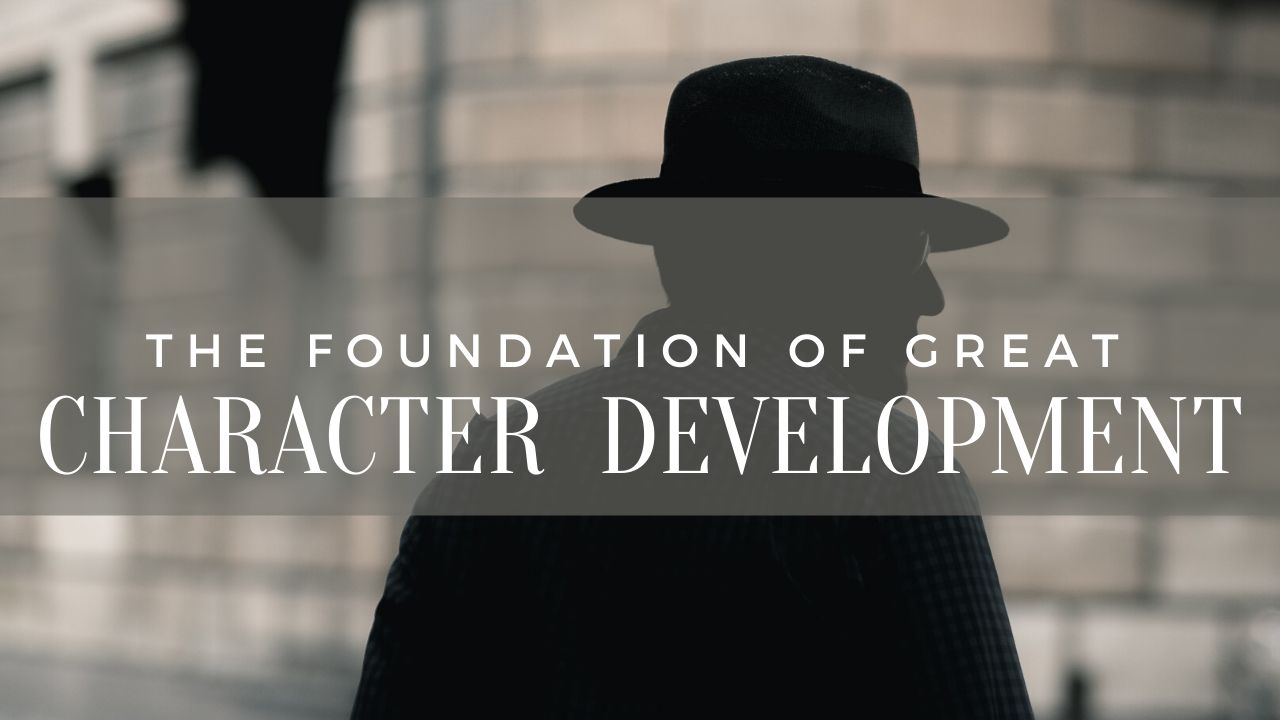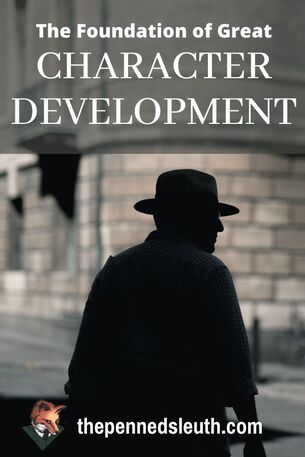Latest Writing Video! |
|
There are many great examples of characters growing and becoming something greater. Be it a cruel character growing soft or a good character turning bad, character development has made for enjoyable reads in every genre. However, there are many opportunities to mess up one’s character development. I am here to make the process easy for you. Here is a short guide on the foundation of character development. 1. Establishing a Character’s PathWhile it is easier said than done, establishing a character’s path is one of the most essential steps. If I were to only give one piece of advice, it would be this; decide where your character is and where they are going. As long as you keep that in mind, you should be able to tell what is right and what is wrong. However, this isn’t the only step. As with many articles I have written, I will use a hypothetical example. It will give you a good idea of what your plans should look like and how to carry each step. I am in the same boat as you now, we need only establish our heading. Trevor Donovan is a detective for the police department. His father was a cop, shot and killed by a criminal. With a deep desire to punish all wrong-doers, Trevor joined the police department, working his way up till he became a detective. With a cold demeanour and little-to-no sympathy for those who break the law, Trevor buries himself in his work with the express desire to ‘fight crime’ more than to protect others. What we have done here is establish a fairly two-dimensional. We have given our character some motive as to why they are the way they are, what their roles are and finally, what their flaw is. Our character is a stereotype, a grizzled detective with a sad past. Toss a few billion dollars into his bank account and Trevor Donovan could be Batman. We haven’t talked much about his personality, other than he is cold with criminals. I’ve mainly done this because it isn’t so important to this particular character’s development. Now, we have established where our character is, let’s establish where they are going. I want to make Trevor Donovan into someone more light-hearted, believing truly in the common belief that everyone is innocent until proven guilty. I want Trevor to come to terms with his father’s death and embrace a new perspective in his profession. In the end. Trevor understands that not every criminal will commit a crime without a good reason. With this in mind, Trevor finds closure concerning his father’s death, knowing that not every criminal will be like the one who shot his father. If now presented with the choice between pursuing a criminal or ensuring a citizens safety, Trevor prioritises the safety of the innocent. More positive, emotionally stable and fast becoming the hero his father was, Trevor Donovan has developed into an inspiring character. With that, we have established an end-point. Now, we need only take this character on a journey, one that will punish him for his flaws, but reward him for his positive traits. With a growing internal conflict, our character will overcome his trials, becoming a truly three-dimensional character a reader can understand and enjoy reading about. 2. Introducing a CharacterMoving on from our plan, we need to now introduce our character to the reader. The best way to do this is by showing the side of the character that the reader will like first. In other words, if we want our character to be liked by the reader, we give them something to like. Detective Donovan stepped through the door, eyes piercing and determined. The average beat cop got out of his way, letting him take charge as he did what he did best. Donovan didn’t question the witness as he already knew what happened from the scene in front of him. Within a few minutes, Donovan stunned everyone by asking the witness a single question. With the witness’s teary answer, Donovan had the perpetrators address. After exchanging a quip with an obstructive cop, the detective climbed into his car and sped off, not waiting for the cops to mobilise. From this, we learn our character is a capable detective with a no-nonsense attitude. With fearsome determination, Donovan shows the reader he is a big deal and captures the reader with what he is about to do next. However, we have only shown the reader the positive traits, the one that establishes Donovan as some hot-shot protagonist. We need not establish the negative. Detective Donovan didn’t waste time. Kicking the door down, Donovan entered the apartment with cold intent. The culprit, panicked and confused, had no time to think clearly. Stumbling in an attempt to escape, the culprit chose to fight instead of run. Donovan welcomed a reason to throw a barrage of fists, beating the culprit into submission and then some. Here we show a darker side to our detective. Inflicting harsh punishment before a trial, only stopping when he feels he is satisfied. It introduces a conflict for the reader, in that although the criminals should be punished, it should be a just punishment sentenced in a trial and not punishment based on prejudice. Your character should have a similar introduction. Show the reader who your character is, but also, at the very least, hint at a fault in their character. In this case, it is a protagonist who goes too far, making use of antagonistic actions. However, you could have an antagonist who shows a lack of resolve in their antagonistic actions. You can easily turn a hero into a villain or vice versa. Your first step is to simply establish the character they have. 3. Sowing the Seeds of DoubtThe next phase of character development is making the character realise that they are wrong about something. It could be you are trying to make your character learn something new, so you have to make them realise that they don’t know everything. Doing this realistically is easier said than done, it takes planning. First, you need to sow the seeds of doubt. Few people learn and develop after one mistake, especially if the consequences of such a mistake aren’t so great. For example, let’s take a simple scenario of a schoolyard football game. A student believes they are the best kicker. The development we are aiming for is that the student realises they are not and they can’t rely on their talent alone. The student is shown they can be better by another student but continues to believe they don’t need to practice. It will be several games later before our character’s ego is small enough to allow some room for humility. Returning to our detective, here’s a way to show him that his priorities need reevaluating. Detective Donovan hears gunfire in an alley. He rushes inside, sees the shooter and a couple on the ground. The couple seem to be alive. The shooter sees the detective and runs away, Donovan chases after the shooter. The shooter escapes and Donovan returns to find one of the two victims being placed in an ambulance, the other being zipped up in a body bag. Later he learns that the living victim phoned for the ambulance. Our detective sees some consequences of his actions but still hasn’t learnt. Donovan is most likely more disappointed that he didn’t catch the shooter than the fact he didn’t help the victims. However, it’s a moment that will stick with him, that will eat at him till he realises what’s important. 4. Sticking with Their StrengthsNow, if our character hasn’t learnt from their mistake, they will most likely double-down on their strengths. The character will try harder, thinking the solution that has worked for them will work again. For example, a character wants to lift a fridge out of place but is not strong enough. The character decides to try harder, hurting themselves in the process. All the time, the character had a pole they could use to leverage the fridge, but they didn’t. In essence, this step is about hammering a point home. The character needs to realise they are at fault, so they need to make one more mistake, perhaps an even bigger one. Returning to our detective, let’s create a scenario that will make him realise what’s important as well as challenge his perspective of the common criminal. Detective Donovan is tracking a criminal. He learns the criminal is a thief, stealing cars and valuables. Seeing the criminal and knowing he is part of a bigger outfit, Donovan decides to shadow the criminal in the hopes he will lead the detective to the rest. Donovan is noticed and the criminal begins to run. During the pursuit, both the criminal and Donovan hear a scream. Someone is being threatened with a knife, the criminal decides to intervene, saving the victim from being stabbed or killed. Donovan has an opportunity to capture the criminal but hesitates just enough to let the criminal go. It’s at this point that our detective starts to see it isn’t all about catching the criminal, it is about protecting others. More than that, he begins to see that although there are bad people out there, terrible law-breakers, there are also criminals who don’t deserve such harsh punishment that Donovan would likely give them. 5. Internal ConflictOur character is learning, now they need to show it. For certain types of development, there will be no internal conflict. The character will simply learn from their mistake and be better. For other examples, development needs to be tested. A character needs to fight their instincts and do the right thing. In the case of our detective, he needs to overcome this internal conflict by coming to terms with his trauma. Remembering his father and his way of thinking, Detective Donovan starts to find closure and in doing so, take these new lessons to heart. Donovan eventually catches the criminal he was chasing, the one who saved the person in the alley. Overcome with the desire to give in to his rage, Donovan raises his fists and the criminal braces himself. However, Donovan once more hesitates, finding himself lacking that cruel desire to punish to his heart’s content. Donovan handcuffs the criminal and takes him to the police station. How you choose to do this is up to you. Your character can have a heartfelt conversation with a friend, or perhaps they relate to someone who was in a similar position. In short, the character makes sense of their new knowledge and develops into a new character. A smarter, wiser character. 6. Embracing a New Way of LifeReaching the end of our character development, our character needs to embrace their new way of life. Having overcome their internal conflict, if any, the character starts to find that things go their way. Where they failed before, they succeed now. It’s at this point the novel is no doubt nearing its end as the main character is moving up after struggling for so long. Detective Donovan starts to do things by the book and with the help of the captured criminal, he has a solid lead which helps him track and capture the protagonist. With a new set of priorities, Donovan ensures no innocents are put in danger and succeeds in his plan. Even now, when the big-bad antagonist in his hands, Donovan finds it in himself not wanting to inflict his own brand of justice on the antagonist. Instead, the antagonist is trialled and punished by the law. Donovan has found peace and is now a better detective for it. ConclusionCharacter development is a process that can either take time or be done in an instant. Whether your character learns to not touch fire or they go through a life-changing journey, character development will make their story human. It is character development that makes these stories so investing and relatable. It is what makes your character a favourite for readers as well as more memorable. Not to mention, it makes writing these characters more enjoyable. Experiment, develop scenarios and put yourself in your character’s shoes. By the end, your writing will become a special experience for you as well as your readers. I hope this article on the foundation of good character development has helped you in some way and as always… Good day, goodnight and happy writing! Thank YouAs a big thank you for reading this article I would like to offer you something for FREE! A writing course on how to improve your main character! Click here to check out your course. If you are unsure about a course, then you can sign up for free training! Claim your free training here! Thank you for reading! Kind regards Matthew Dewey, Writer Pin for Later
0 Comments
Leave a Reply. |







